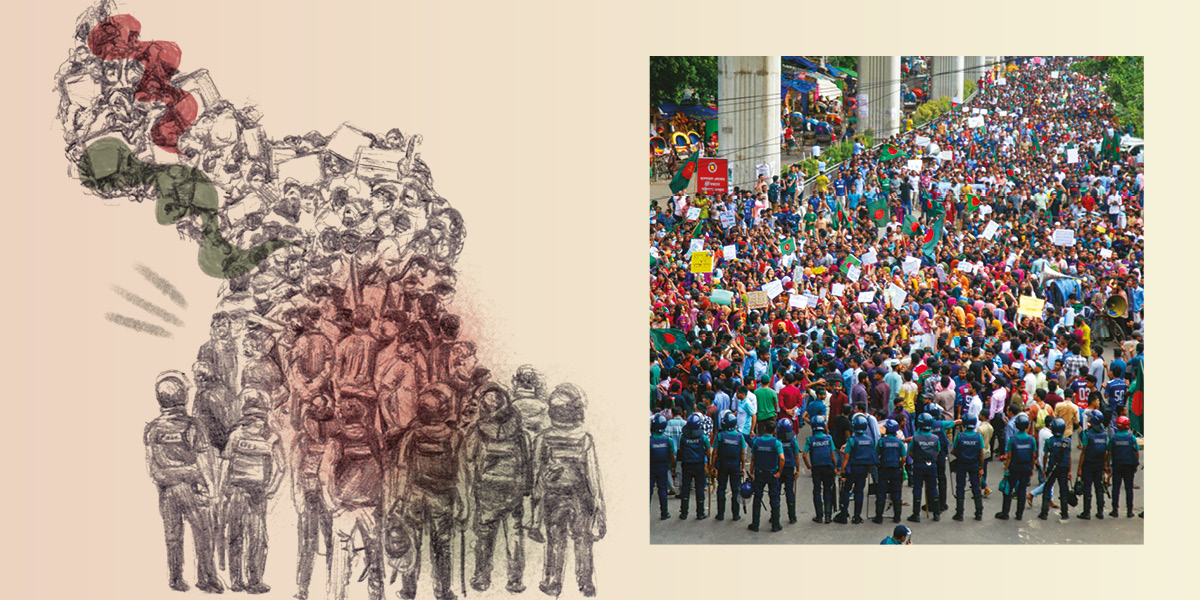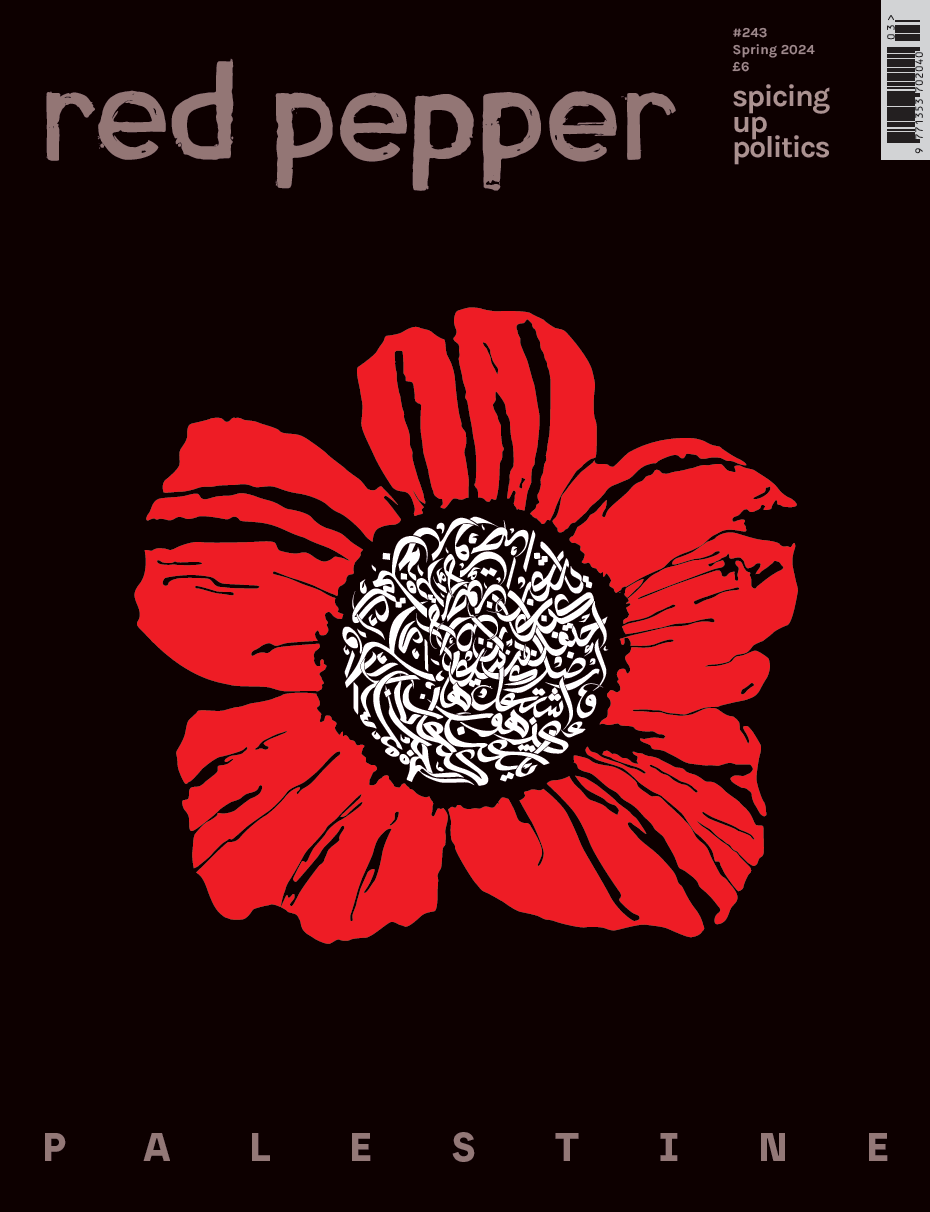The brief history of Bangladesh is punctuated with mobilisations that have upended political hegemonies. The common denominator among all these historical events – the language movement (1952), the liberation war (1971), the ouster of dictators (1969, 1989-1990) – remains a vanguard of students. Student power has been the driving force at critical junctures of Bangladesh’s history, and undoubtedly, a major political force in the intervals. Thus, it is unsurprising that in the most recent political upheaval, students initiated the downfall of Sheikh Hasina’s 15-year-long dictatorship.
The seeds of the movement that toppled Hasina were planted as early as 2013 when the first quota reform movement took to the streets. With rising unemployment, especially among the youth, students from public universities demanded that the quota system for government jobs be amended to create more job opportunities. The quota system was originally put in place to ensure freedom fighters from the liberation war and their children would be rewarded for their sacrifice, and to provide access to marginalised social groups. But over time, it became an avenue for the ruling party to dole out largesse to its loyalists. It was the demand for a stable job and a secure future that compelled students to repeatedly take to the streets between 2013 and 2024, despite the violence meted out to them by the state security apparatus and the ruling Bangladesh Awami League (BAL)’s notorious student wing, the Bangladesh Chhatra League (BCL).
The quota reform movement transformed into the anti-discrimination movement in July 2024 after the Hasina regime’s brutal repression of protesters. Under an internet shutdown, state security forces and BCL cadre ran amok, killing hundreds and injuring thousands. The regime’s impunity, along with crony capitalism, lack of accountability, disappearances and all the other indicators of authoritarianism finally united the students and the people. This student-people power put forward the singular demand that Hasina must go. On 5 August, faced with an enraged public and a military that refused to do her bidding, Hasina resigned and fled to India.
Battles for authority
The power vacuum left by the fall of the Hasina regime has created a political interregnum, with opposition parties coming out of their hibernation. An interim government headed by Dr Muhammad Yunus – a Nobel peace prize winner and a champion of neoliberal microfinance policies – has taken the helm of the country since 8 August. His cabinet reflects representative politics, but its policies have yet to manifest. In the meantime, political parties such as the centre-right Bangladesh Nationalist Party (BNP), and Islamist parties like Jamaat-e-Islami (BJI) are taking over BAL’s operations.
In the aftermath, a purge continues within state bureaucracy: those deemed to be BAL loyalists and sympathisers have been forced to resign; civil society members and celebrities deemed to have been laundering BAL’s propaganda have been publicly cancelled; BAL politicians en masse are being charged on a slew of legal cases.
The current interregnum presents an incredible opportunity for democratic transformation
The upheaval is reminiscent of Antonio Gramsci’s thesis on political interregnums: ‘The old world is dying and the new world struggles to be born. Now is the time of monsters.’ Gramsci’s metaphorical monsters appear during a crisis of authority. Presently in Bangladesh, the fault lines – based on class, sex, ethnicity, religion – once diminished by the student-people unity, have returned in full force. Communal violence has flared up with attacks on Hindu minorities; mob (in)justice has resulted in several gruesome deaths; indigenous Adibashis still face the jackboot of Bengali settler violence; garment and tea workers go without due wages. All of this amidst a slew of cultural fights waged by Islamists against the secular, liberal civil society who they allege are proponents of a western, liberal, pro-LGBT+ agenda.
The student movement itself is fractured. The quota reform movement ostensibly was an expression of bourgeois and petit bourgeois frustrations. Even as it transformed into a movement against tyranny, it called for the restoration of liberal democracy. Today, female and feminist leaders have been sidelined, leftist student leaders have resigned over ideological differences, others have publicly affiliated with Islamists, while some have called for abolition of all student politics on university campuses. The birth pangs of this second independence have prompted exclamations of ‘Is this the liberation we wanted?’
Same system, different ruler?
The re-emergence of student power dynamics is reminiscent of Maoist China’s cultural revolution, when student factions openly fought with each other with the goal of destroying the other. Political theorist Asad Haider postulated that this factionalism arises from a ‘depoliticised’ politics – one based on destroying opponents.
Historically, this is the ‘student politics’ dynamic practised in Bangladesh since at least 1990, when the ruling party oscillated between BAL and BNP and their respective coalitions. The student wings of BNP, BJI and BCL have attacked each other, and other leftist groups, devoid of any ideological positions. Their main goal has been to control university campuses and associated business contracts. Such factionalism, Haider contends, reinforces the status quo; the absence of ideological differences only serves to perpetuate the existing order.
Is this our fate, the status quo under a different ruler? In Haider’s formulation, emancipatory politics can and do stem from the same conditions that give rise to factionalism – but only if there is a movement that ‘affirms the political capacity of everyone, independent of the place they occupy in society’. This was the nature of the student people polity that brought down Hasina – students, rickshaw pullers, garment workers, mothers, fathers, sons and daughters, all acting with political agency. The inevitable follow-up question is: how do we maintain this plurality?
The levers of power in Bangladesh politics have long remained in the hands of the two major political parties and their dynasties. The current interregnum presents an incredible opportunity for democratic transformation. The political legitimacy of the Yunus government is propped up by student power; the cabinet, for the first time, includes student leaders. These have the social and cultural capital to support the downtrodden in society, who can reclaim their positions as historical agents of change. This is the responsibility and task ahead for them – if they want to remain true to the intentions of the anti-discrimination movement and to avoid perpetuating the legacy of Sheikh Hasina and BAL, a liberator turned-oppressor.










